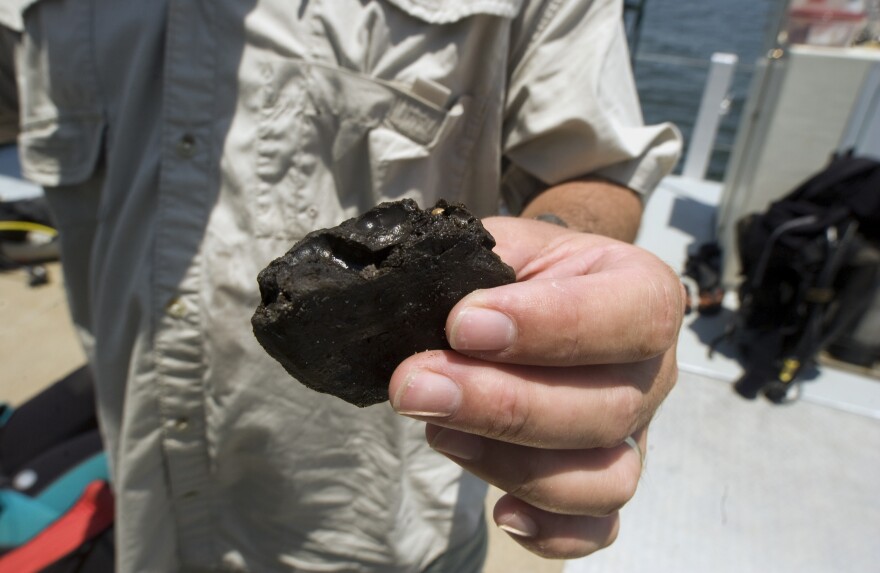
There is a rich history surrounding the voyage of Tristan de Luna to what’s now Pensacola. And it’s getting richer with a new discovery by the University of West Florida’s Archaeology program.
Outgoing UWF President Judy Bense making the announcement, at the T.T. Wentworth museum in downtown Pensacola.
“I am absolutely thrilled to tell you that we have discovered a third Luna shipwreck in Pensacola Bay,” said Bense to a round of applause.
That third shipwreck from Tristan de Luna’s 1559 excursion was discovered near the first two: Emanuel Point I, uncovered in 1992 and Emanuel Point II, which was found in 2006. This discovery, in June of this year , will be called Emanuel Point III. They’re named after the area of Pensacola Bay in which they were discovered.
“This is a ‘10’ in the world,” said Bense. “There is no archeological site that has a terrestrial settlement and a fleet under study at the same time. They are also treasured by our community.”
That terrestrial site of de Luna's colony is in a developed neighborhood in Pensacola, marking the earliest multi-year European settlement in what’s now the United States.
UWF Archaeology Institute Director Elizabeth Benchley says the project has been working under a special grant for the past couple of years – $290,000 from the Florida Division of Historical Resources.

“The grant was to continue exploring Emanuel Point II, and also to search for other ships that might be related to the Luna fleet at the same time,” Benchley said. “And it was during that search that the third ship was discovered during our Summer Archaeology Field School.”
Anthropologist Greg Cook, the principal investigator of the Emanuel Point II shipwreck, said during a Power Point presentation that the discovery of EP III near the EP II site was through an anomaly.
“Magnetometers detect anomalies in Earth’s magnetic field, caused by the presence of iron, which is common on shipwreck sites,” said Cook. “We trained dive teams to conduct circle searches with probes or hand-held metal detectors. Almost immediately on this day, divers surfaced and said they could feel hard return – or ‘stones’ – with their probes.”
Under a permit from the Florida Department of Environmental Protection and the U.S. Army Corps of Engineers, the team will conduct test excavations on EP III through next March, to determine the extent of the shipwreck and the type of wood used in her construction.
“It’s wonderful that we’ve been able to support this program; I’m happy that we’ve been a part of it,” said Tim Parsons, director of the Florida Division of Historical Resources, and a Pensacola native.
“Our division does a lot of things; one of the most personal to me and most exciting to me is the archaeology,” Parsons said. “And I have the unique privilege of being able to help, along with our staff members, this kind of work.”
And as with Emanuel Points I and II once the artifacts are recovered and processed, they will be placed on public display.
More information about the Emanuel Point shipwrecks and the Tristan de Luna land settlement can be found at www.uwf.edu/luna.






